Quantum Communications (QC) are revolutionising the way we transmit information and connect remote parties. Leveraging on the quantum properties of photons and on the tools developed for optical communications, it is now possible to create quantum networks that distribute confidential information to distant users with the highest level of security and create quantum correlations - or entanglement - at its nodes, thus shaping the future quantum internet.
This ambition is currently hindered by the limited distance or equivalently loss budget, featured by QC. When a photon is sent through an optical medium, e.g. an optical fibre, it undergoes scattering and absorption and emerges from it with a probability that is exponentially small in the medium’s length. As a result, only a small fraction of the photons launched in a communication channel can reach the remote user at the other end of it.
Until 2018, the record distance for fibre-based QC was about 400km [1]. With the introduction of Twin-Field (TF) Quantum Key Distribution (QKD) [2], this distance was extended initially to about 600km [3] and recently to more than 1000km [4]. Importantly, the Secure Key Rate (SKR) entailed by TF-QKD is much larger than conventional QKD and resembles the one typical of a Quantum Repeater (QR) [5]. As it turns out, TF-QKD is an “effective QR”, with ‘effective’ meaning that it works as a QR but is not scalable, i.e., it cannot be daisy-chained with other TF-QKD boxes to reach arbitrary distances.
To further extend the transmission range beyond the state of the art, it is necessary to build a full-fledged QR for TF-QKD. This fundamentally requires quantum memories and operations that involve the use of entanglement, both in its standard polarisation-based form and in its more exotic variant based on time bins and optical phase.
In this project, the candidate will investigate physical systems that can act as quantum memories for photons in the C band (reference wavelength: 1560nm) with the general goal of demonstrating a QR for QKD. The systems of choice will be Rb atoms, either cold in a Magneto Optical Trap (MOT) [6] or at Room Temperature (RT) in a vapour cell [7] using the Rb D2 line at 780 nm.
For the research, the student will be given access to the necessary facilities in the East and West Campus of the University of York and will be part of a stimulating and growing quantum community. The student will work under the supervision of experienced trainers that are world leaders in their field. The student’s willingness to work in the lab is essential and a good theoretical background is desirable.
How to Apply: Applicants should apply via the University’s online application system at https://www.york.ac.uk/study/postgraduate-research/apply/. Please read the application guidance first so that you understand the various steps in the application process.
Funding Notes: This is a self-funded project and you will need to have sufficient funds in place (eg from scholarships, personal funds and/or other sources) to cover the tuition fees and living expenses for the duration of the research degree programme. Please check the School of Physics, Engineering and Technology website (https://www.york.ac.uk/physics-engineering-technology/study/funding/) for details about funding opportunities at York.
References:
[1] Phys. Rev. Lett. 121, 190502 (2018), doi: 10.1103/PhysRevLett.121.190502.
[2] Nature 557, 400 (2018), doi: 10.1038/s41586-018-0066-6.
[3] Nature Photon. 15, 7 (2021), doi: 10.1038/s41566-021-00811-0.
[4] https://arxiv.org/abs/2303.15795
[5] Nature Commun. 8, 15043 (2017), doi: 10.1038/ncomms15043.
[6] Nature Commun. 5, 3376 (2014), doi: 10.1038/ncomms4376.
[7] https://physicsworld.com/a/rubidium-vapour-makes-a-good-quantum-memory/
